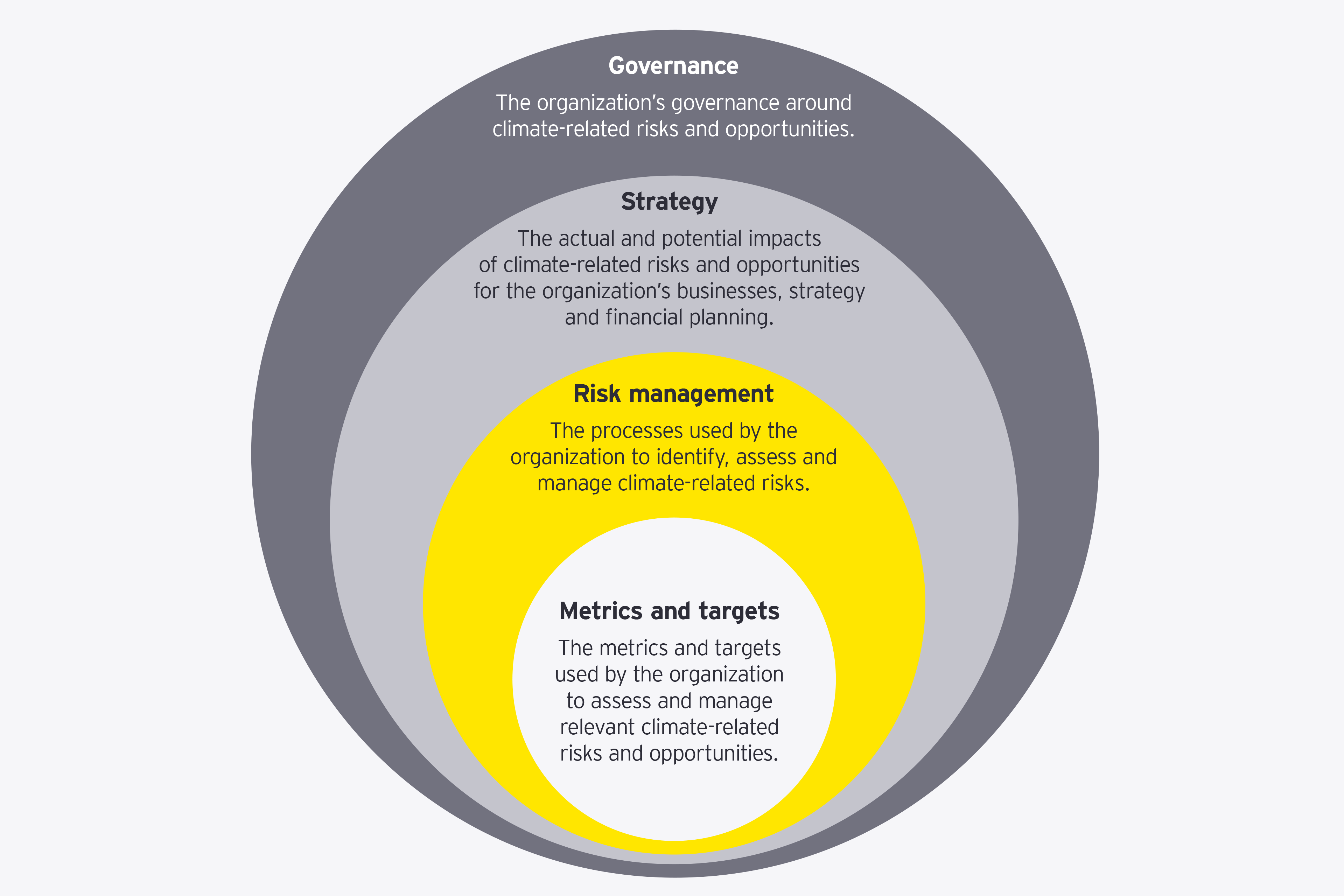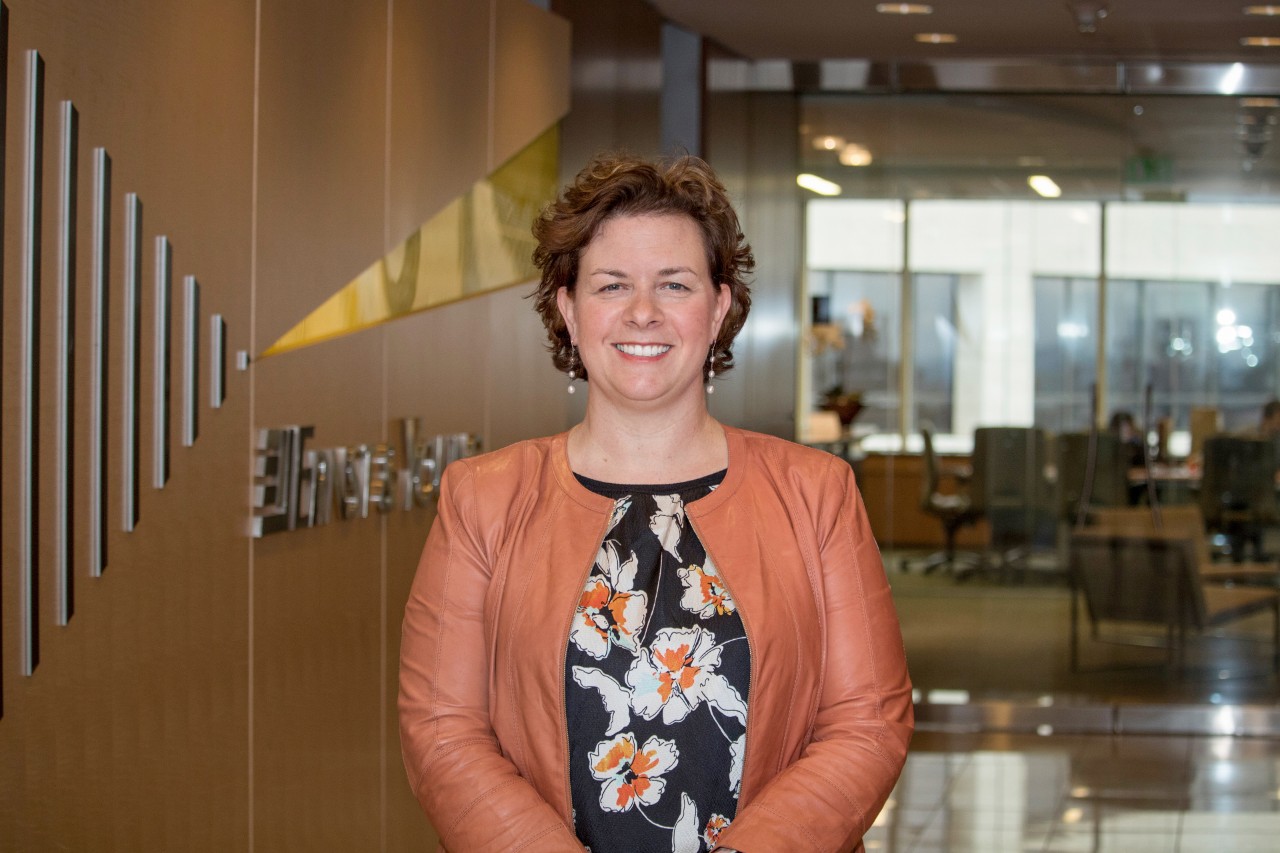Where we are today
In the TCFD assessment, we identified the following set of priority material climate-related risks and opportunities, which our teams modeled in two scenarios – a low carbon economy (LCE) and business as usual (BAU) – for multiple future time horizons.
The scenarios aligned with IPCC AR6 Shared Socio-Economic Pathways (SSPs) to understand the range of potential financial impacts and how various socio-economic factors will influence risks and opportunities in the future:
- LCE: Lower emissions scenario (SSP1-RCP2.6) anticipating less than 2°C of global warming by 2100
- BAU: High-emissions scenario (SSP5-RCP8.5) anticipating 4-5°C global warming by 2100
Reputation risk
Our reputation as a leader on climate action is a key market differentiator and a key factor influencing revenue growth. In either the LCE or BAU scenario, EY could experience significant advantages or disadvantages with talent retention, as well as significant revenue gains or losses, depending on the maintenance or loss of its market-leading climate reputation.
Sustainability services opportunity
We expect demand for EY sustainability-related services to grow rapidly in both the BAU and LCE scenarios, as the world adapts to climate change and mitigates climate risk.
Served emissions
EY teams serve clients in every sector and every geography, including many of the largest organizations. Client climate risks therefore become our own. These risks are concentrated in six key sectors, based on our calculation of their weighted average carbon intensity and their proportion to our overall revenues.
Market demand risk
EY clients in many sectors face substantial transition risks, which could significantly affect their demand for a range of EY services. This presents a cross-cutting risk: If EY clients in carbon-intensive sectors fail to decarbonize quickly enough for evolving public opinion, EY could face reputational risks. On the other hand, existing business relationships with carbon-intensive players could mean significant opportunities to aid and accelerate the transformation of these clients and sectors.
Acute and chronic physical risks
As one of world’s leading and largest professional services organizations, with offices in nearly every country, our physical climate risks are broadly reflective of the distribution of anticipated climate impacts globally.
What we're doing well
Progressing the seven actions of our Carbon Ambition
Achievement of our Carbon Ambition is being driven by measurable actions in seven key areas. These targets focus on the most important dimensions of EY activities ranging from business travel to electricity sourcing, offsets and removals, and suppliers. We reached the major milestone of becoming carbon negative globally in our 2021 fiscal year and are making the needed investments to achieve our targets in all seven areas.
Educating and upskilling
We are equipping EY people with the knowledge and skills needed to understand and respond to both EY climate risks and opportunities and those of EY clients. Our initiatives draw on a variety of strategies, including offering a formal sustainability MBA, engaging EY people in supporting climate positive entrepreneurship, and facilitating employee-led internal sustainability networks.
Bolstering our climate risk assessment
Our Climate Change and Sustainability sub-service line worked together with our Quantitative Economics and Statistics group to develop robust modeling to provide the basis for this TCFD report. This market-leading analysis provides us with valuable new insights into our physical and financial climate risks, which we are sharing with stakeholders and incorporating into our strategy. It also provides the foundation for deeper and more comprehensive analysis in future reporting.
Acting as a catalyst for sector transformation
Our cross-service line teams are supporting clients in every sector to achieve their own carbon ambitions and transform their businesses to thrive in a low-carbon economy. Working with a broad ecosystems of alliance partners, our teams are helping clients reframe their strategies, accelerate their net-zero transitions, govern and operate more effectively, and build stakeholder trust.
Positioning our sustainability practice for growth
We are investing in the talent and capabilities needed to pursue the sustainability-related service opportunities presented in both the BAU and LCE scenarios in coming years. Our investments include upskilling and headcount, building and acquiring new capabilities, and building an extensive ecosystem of business partners who can help us deliver leading sustainability services to our clients.
Where we need to focus
Governance
Compensation at EY is not currently directly linked to the achievement of our climate goals. We could increase global and regional climate accountability by directly linking compensation to progress on specific metrics related to our Carbon Ambition and the seven supporting actions we have defined, particularly for senior global executives.
Strategy
While climate objectives are a core part of our overall corporate strategy, and we track our progress against our climate ambition, we need to incorporate sustainability metrics into strategy processes across all functions more consistently. Increasing comprehensive sustainability metrics monitoring would allow for more strategic decision-making. The market transition and reputation risks, and the potential sustainability services upside, underscores the continuing need to prioritize key recruitment activities across climate change and sustainability expertise.
Risk
This analysis highlighted the breadth of potential risks to EY people, office operations and markets globally, underscoring the need to continue to develop and deploy organization-wide and regional tools, checklists, and training scenarios for climate change-related natural disasters as such events become more frequent and severe. Risk will continue to build out Key Risk Indicators for ESG and climate change-related risks as part of the broader enterprise risk management (ERM) process.
Looking ahead
We come away from this TCFD assessment more deeply engaged with each pillar – governance, strategy, risk management, and metrics and targets – and a renewed commitment to achieving our carbon ambition of becoming net zero by 2025.
The process of developing the point of view and analysis shared in this TCFD report engaged over 50 EY leaders and professionals, representing all our service lines, geographies and key business functions. The interviews, workshops and quantitative analysis which informed this assessment strengthened existing organizational relationships around climate and created valuable new ones. As a result, we look forward to operationalizing our climate targets over the next year with enhanced agility and effectiveness.
We also look forward to building on the foundational risk analysis and scenario modeling presented in the assessment. This will help us both to deepen our reporting for TCFD and lay the groundwork for an eventual Taskforce on Nature-related Financial Disclosures assessment, as we bring an increased focus on biodiversity.
Related articles
Summary
The 2022 EY TCFD report highlights our progress toward achieving our Carbon Ambition of becoming net zero in 2025, our steps to integrate climate considerations into global strategy, and our initiatives to upskill our people to respond to climate risks and opportunities – both our own and those of EY clients. The report also identifies where we should focus to make progress faster, providing the framework for action over the coming year. We come away from TCFD assessment process with a redoubled commitment to leveraging our global scale and relationships to catalyze climate action.






